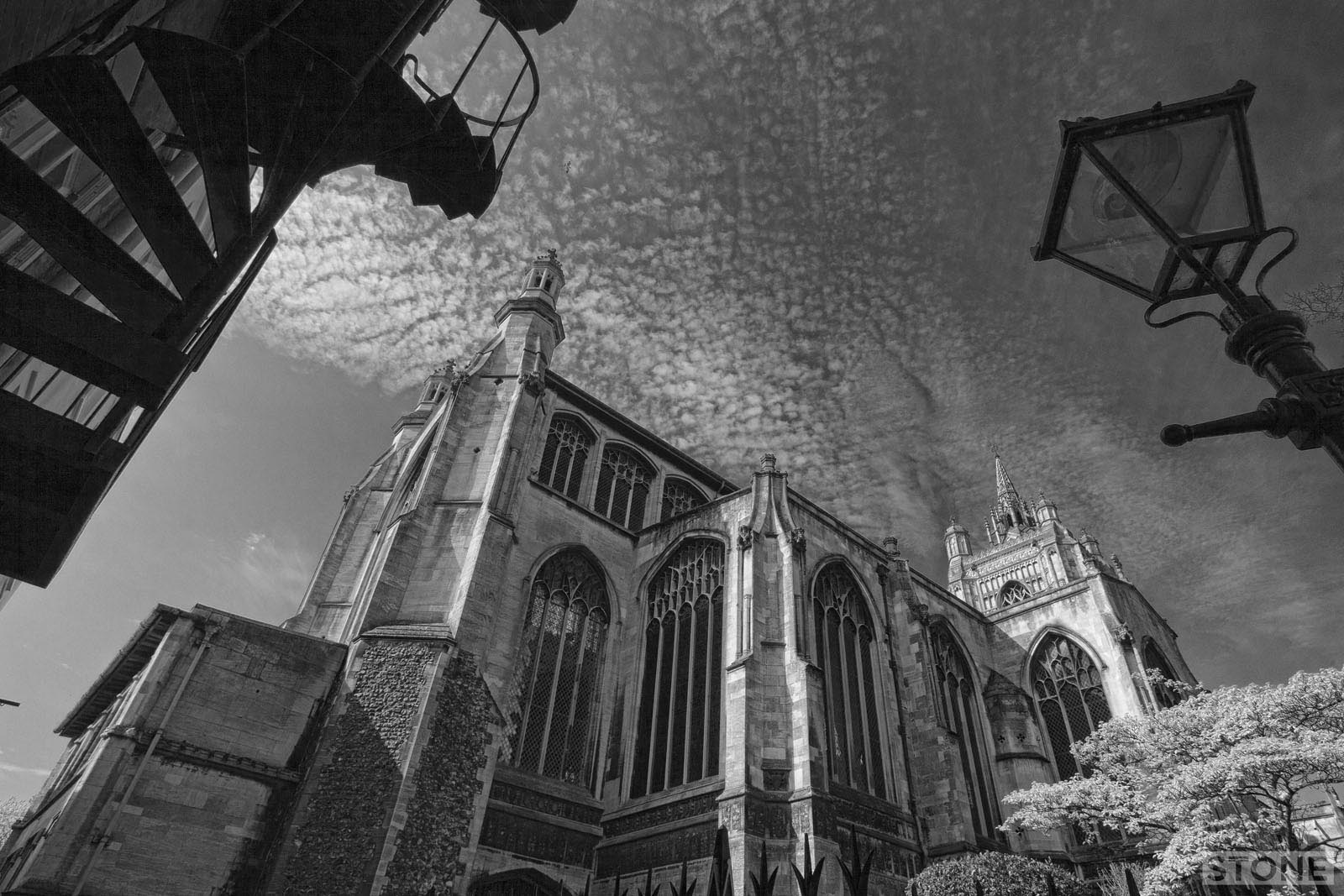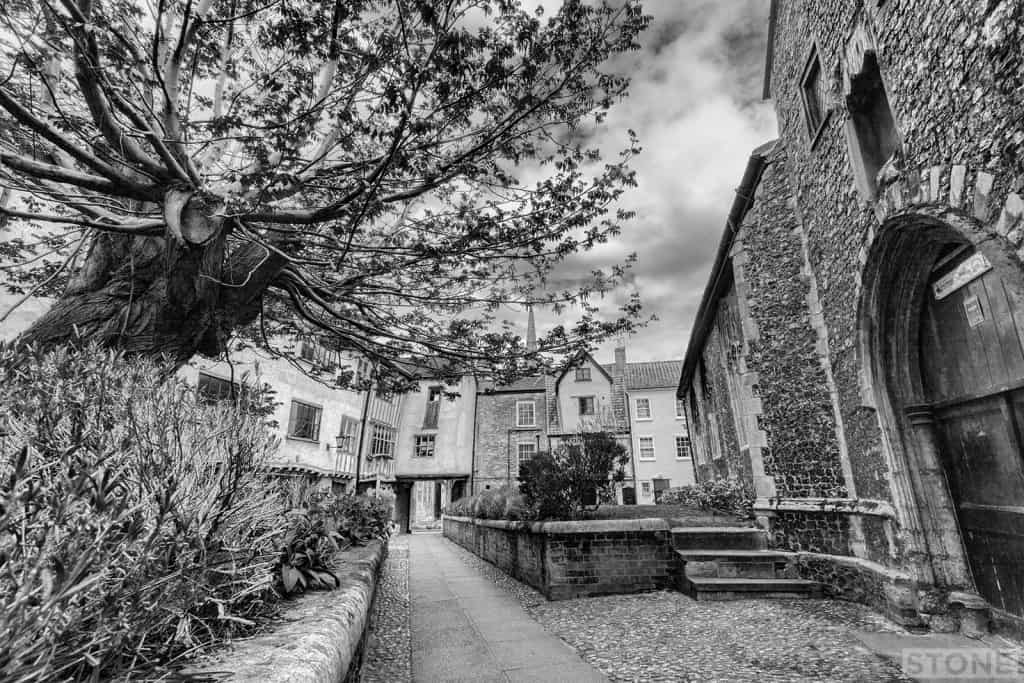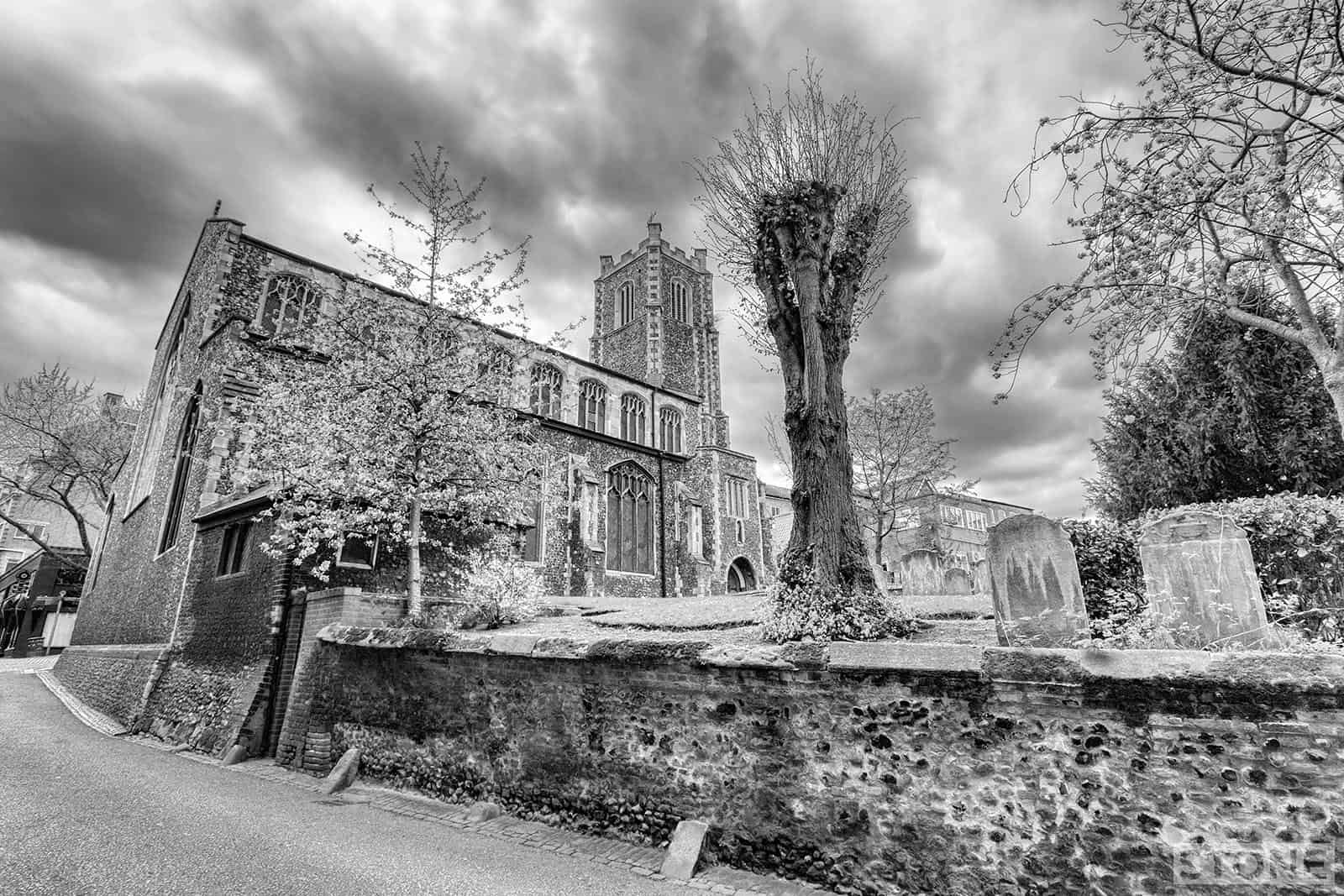It’s odd where you end up in conversations, the same is true in a digital landscape as it is in an analogue one. In between the pictures of cats, the videos of fat people falling over and the flux of skulking, trolling and pixel-fist-waving/bumping that goes on in our inflatable social media lives conversations rear up about all sorts of things at all sorts of times, which is one of the reasons why I like it. One night as the part-timers and early-risers headed off to make Ovaltine and brush their teeth. A straggling series of tweets; moans, disparate puns and smart-arsed comments ignited into a proper conversation as they sometimes do. A few of us who all have what varies from a fairly intense to a slightly more than passing interest in various mostly unrelated chunks of history somehow got involved in a conversation about the Black Death. I can’t remember the exact circumstances at what spring line the conversation rose, but it’s one of those bits of our historical culture that has always interested me, so I followed it and chipped in. My interest is partly because of the way the socio-economics of it affected the structure of society, which you can read a little bit about here. It’s also partly because when one of the four horsemen peels off from the main marauding, drinking, and misery party you tend to get a big dent in the fabric of time, or in this case several big dents spaced out over several centuries across a large percentage of the globe as he wandered around scratching shedding dust and bodily fluid everywhere interspersed with the odd sneeze or cough to ham it up a bit.
He stood in the stirrups rising on the shoulders of the white horse, both still fresh from the rat infested ships at port, before that they’d ridden alone then with his brother at war in the Crimea slinging bodies over the wall to infect the besieged, back along the Silk Road. He sniffed back and scratched a lump and stared across the vague rolls of Norfolk, to the anthill towers and spire of Norwich and thought, ‘it’s not as flat as everyone makes out, but this is still going to be an easy ride’. And so it was.
The predominant belief is that the Bubonic plague, if that was in fact what it was as opinions vary, had spread rapidly into Southern Europe from Asia, breached the watery walls of the Mediterranean to reach Sicily then up across the continent again thrusting against the sea. But then like now there are few fences against a world of trade, the desire for different goods and easy profits. Ships full of cloth and food becoming harbours for the fleas and rats and the bacteria; host, vector, agent, the reservoirs of the sickness inside sailors and travellers alike; feverish with coughs and aching armpits, purple skin lesions and rampaging fevers. The plague travelled in much the same way many other infections do, and the similarities with recent outbreaks of Ebola conjure up the same fears. In this case it was the gut of the flea and the blood of the bitten, passed by insect bite, or person to person in the pneumonic variant. It eventually kills its host whether vermin or verger and continues to do so until it exhausts itself by destroying the pool of recipients and hosts, then draws back while the pool reforms ready to return when there sufficient hosts to multiply in and kill again. As a nation and as a species, alongside the carrier species, primarily the pampered swells of Xenopsylla cheopis and letterly the more cosmopolitan Pulex irritans then most probably a combination of Rattus Rattus and Rattus Norvegicus. We fell like ninepins. Even in the open spaces and fresh air of the countryside there was no stopping the silent footsteps once someone was infected, this as particularly true in East Anglia with a dense population at the time. The same was true throughout the continent; it is estimated that a third of the European population died, worldwide an estimated population of around 450 million was reduced by 100 million.
The figures for Norwich are vague, confusing, they conflict with each other and as a result feel spurious, because they are. The highest claims by Blomefield (1805) put the deaths at 70,000 and Dugdale (1860) at 58,000. These figures are strange. This is in a city which had a population that has been more recently estimated at nearer 15,000; John Kelly (2006) wrote that by 1377 the plague had dropped the population from around 20,000 to closer to 6,000 which seems rather more realistivc in our city of industry and orchards. It is also suggested in various places that these high figures may be a wider figure for Norfolk or the whole diocese which may also be unlikely. Even Blomefield, who was rather closer to the facts than we are vaguely questions this and so does everyone else I’ve spoken to and most of what is available to read. Blomefield is better at quoting what he read in the Book of Pleas in the Guildhall it’s in Latin, not my strong point:
‘In the year of our Lord 1349, God Almighty visited mankind with a deadly plague, which began in the south parts of the world, and went through even the northern parts thereof, attacking all nations of the world; this plague equally destroyed. Christians, Jews, and Saracens, killed the confessor and the confessed: in many places this plague did not leave the fifth part of the people alive, it struck the world with great fear, so great was the pestilence, that the like was never seen, heard, nor read of before, for it was believed, that there was not a greater number of souls destroyed by the flood in the days of Noah, than died by this plague‘. (fn. 53)
He goes on to comment on the size and vigour of it in the city itself, on the multitude of medieval parishes and the 70 odd places of worship that define the communities, the settlements at Pockthorpe and Heigham and the religious structures and houses in the city; a city at the peak of its power. At the time Norwich was one of the largest and finest in Britain with a city wall at the time still being finished that encompassed an area marginally larger than that of the walled city of London. Ziegler’s book on the Black Death however seems to get closer to the truth with the figures, He references Russell who did some careful maths and worked out from Leet Rolls and Poll Tax records that someone somewhere at the time, probably an inattentive clerk effectively added a digit to the figures. Russell works back and comes to a population of 13,000 with around 7,000 dead. This is staggering, over half the population of what was at the time England’s second largest city gone. The impression fed down via the refracting eyes of those past historians still at least accurately indicates that the fever or pestilence had a massive impact on the city, county and country as a whole. When something is either very big or very small those areas are the most fertile soils for exaggeration. The suggestion here is where the figures are wrong here, they do still at least reflect the impact on the people and families was big enough to make people exaggerate it even more.
Both Christopher Reeve the author and Ursula Priestly a UEA researcher point to a city with a substantial number of empty shops and market stalls, all empty for long periods and falling into disrepair, latterly with a provision market with it’s fruit and veg, meat puddings, chandlers and parmentiers contracted to accommodate the drop in trade and lack of merchants. It seems that the city didn’t really recover for over 300 years, and had it’s course altered as a result.
Whatever way you look at it, this is a lot of misery and a huge number of dead people. And here again the conversation, where did all the corpses go… In London there are plague pits from both major outbreaks and the rise and fall of the ancillary outbreaks around them. These pits are far more apparent in the seventeenth century. As Dr Nick Groves points out; “The idea of burial outside consecrated ground was probably anathema to the mediæval citizens, but maybe less so to post-Reformation ones”. Crossrail have dug the evidence up recently in Charterhouse Square and Spitalfields. Previously recorded these are neat burials not chaotic bone holes. There are other acknowledged places in the capital that were grassed over that are still grassed over, with generations of citizens, mostly oblivious, having picnics on them, some of them contain the bodies of thousands. Where are our plague pits, the mass graves, the sad rows of stained bone in the marl? And the best answer I think, based on the actual real evidence, there are none. We know of no pits or mass graves, no evidence from archaeological digs or in historical writing, and that silence in the scratching nibs and under the searching trowels speaks louder than you’d expect.
Part of the original conversation and another aspect of my personal interest in it was about the myths that our perception of history creates, like Babes in the Wood it is easy to get lost in the trees and lose the trail, to lose touch with the past. What I found as I prodded the Internet with my steadily blackening fingertips was the repeated assertion by nearly every website that mentions The Plague in Norwich this strange claim that there is a large plague pit containing many hundreds, possibly as many as seven thousand victims in Tombland, right under the Samson and Hercules. What is interesting is, as with all the ghosts and spectres that haunt the ancient city centre this appears to be a mythology borne of misunderstanding and want, not just a the modern malaise of the triumph of desire for a story over facts. It simply has no foundation in anything I can locate anywhere. The myth has turned into a reality because somebody said something to somebody who said something to etc, the act of repetition and chinese whispers has created an unproven reality in the nature of ‘now’, the internet and our misinformation age is where this has gained traction and is currently being used to sell tours, a story that is creeping insidiously in beside all the other demoralising clickbait and generally appearing all over the place to mislead anyone who chances upon it, it’s even leeched into the websites and pages of the usually carefully censured sacred hall of information where most content is based on facts and research. And I think that’s where I started to get annoyed.
Tombland is an evocative name, one which locals mostly casually ignore, along with lanes named after goats and cattle and squares named after hay. The streets we walk unquestioningly with -gate in them, Pottergate, Fishergate, Mountergate. It’s all part of an ingrained familiarity our internalised and mapped out topography, the personal everyday landscape. As such it’s all part of a nomenclature that we mostly take for granted along with hundreds of other interesting, evocative and meaningful street and place names that hide their own history too. However the resonance of the word is both obvious and powerful. It takes absolutely no leap of the imagination to figure out its potential association with death, graves and so on, it says Tomb in it, it must have a tomb in it a big one. Well it hasn’t, not except the raised bone beds of St Georges. There almost certainly are plague pits but not here.
Imagine for a second you are an Anglo-Danish settler from the ninth century. You speak a language similar to, but not the same as the local language and you’d named it Tombland in your tongue, your dialect. A tongue not entirely unrelated to Old Saxon English, but different enough. And at the time it meant something else. in a similar way to how Slutshole Lane Near Wymondham in Norfolk is actually named after a Sluice and the corruption is linguistic the mind of the inner child sniggering into cupped hands. And so it is here. When the settlers from Angeln, Saxony, Friesland and later Jutland arrived, and the areas changed and developed. They obviously wanted a large convenient area with various amenities in situ. Tombland was positioned at the conflux of two important roads, one of which is quite possibly Roman and follows a line parallel with burial sites, barrows and other remains now buried in the familiar landscape of shops and tenements. The area is also axial to two proto-Norwich settlements; Fyebriggate leading North into Norwic or Northwick; ‘the northern farmstead/settlement’ and Kings Street into Conesford or ‘Kings-bridge‘ to the South. It was also on a river crossing with access, fishing, water and somewhere to tie up and unload; rivers were the railroad and the motorway, the supplier and the sewer. Tombland is a nice clear space at an important junction, and this is a clue as to how important Tombland was and what it means. ‘Tõm’ literally means ’empty’. Tõmylond ’empty space’ or ’empty land’ in Old English which according to Sandred and Lindström has a Scandinavian origin as opposed to straight Saxon. So this is one crux of the thing, historically it became a large market place that came to fruit in the city in Late Saxon times, A civic centre right at the core of the society that coalesced around it from the satellite settlements of Westwick, Conesford, Coslany Norwick and Westwick. It was important enough to the Normans that in a fit of ‘we’ll show you who’s boss’ they put a cathedral almost on top of it over pre-existing Saxon chapels nearby. And although the market eventually moved to the new castle fee in on the edge of Mancroft where it still is Tombland was and is still an important space that’s hosted merchant’s houses, Royal armies, a Palace, revolts, fires, fayres and the occasional nightclub ever since.
Now, let’s suppose you suddenly have a few thousand dead people, because it all did happen quite suddenly, death does that, particularly when the pale rider on the white horse is spreading the Yersinia pestis bacterium about and nobody has discovered antibiotics yet. We have to ask would anyone seriously drag those bodies in carts with all the other associated health risks to the middle of a particularly busy and populous bit of the city on a medieval watery trunk road near a huge cathedral, dig a vast hole and fill it with slightly off colour gently seeping long-pig. In turn risk affecting the ground water, stink the place up, spread other nasty things like Typhoid or dysentery. Not keen, Thought not.
The only factual pointer to anything near Tombland at all that could even vaguely be related to a plague pit is another possible burial ground within the grounds of the cathedral in the Green chapel; an outside area for service and prayer. Although again there’s no mention in Gilchrist of this and very little to back it up beyond a story regarding William Bateman, Bishop of Norwich, who had one particular official, Thomas de Methwold, who left the Cathedral and hid in Essex because the stink of the bodies was so bad before he was called back to get on with it. Bishop Bateman himself is recorded to have lost his brother as a result of the plague and assisted in setting up Trinity college in Cambridge maybe at least partially as a result. According to Venebles (1885) 2,000 clergy in the dioceses died, that’s possibly an unrealistically high concentration of priests. It seems that our white horse rider sneezed on the blessed even harder than those outside.
Faced with this slightly variable but still huge number of dead people, the answer would probably be to bury them in a local churchyard. A sensible idea considering the number of burial grounds in the city, each parish managing its own dead from the families who used the churches as centres above and beyond just prayer were using them in death as well. Additionally Tombland is a square where a large public toilet has been sunk deep into the ground, Where reputedly one of the oldest hotels in England; The Maid’s Head occupies part of the area and has done since before 1349. The footings of most of the buildings contain cellars of some sort or another. And one; the Samson and Hercules contained a swimming pool and basement bar. When Bryan Ayers dug part of the site in the 1970s six bodies were found, probably fourteenth century, and equally probably from a graveyard extension to St George’s. An example of the mission creep of the living over the dead as memory fades.
But ultimately I feel in my bones that their bones are not here, there is almost certainly no plague pit, the Internet with all its trolls, kittens and clickbait is wrong.
So again, where are the bodies of our dead ancestors. It doesn’t take a lot of probing to find out where at least a few of them are, in some cases exactly where they were placed, not thrown. The first area to look are the most obvious; churchyards. If you are going to bury somebody, even in a rush because the slightly leaky dead have a transmissible disease, the best place is somewhere where they would normally go if they were dead, these general storage areas for our bodily remnant. One of the things about nature is it rushes to fill a vacuum, so when the population of the city market was already in decline because of the customers and stallholders infecting each other and dying the most obvious thing to do is make the graveyard of the local church bigger to accommodate the extra residents. And this is exactly what they did, and they detailed it so evidence and facts exist. The area where the drapers and cobblers had plied their trade in capes and soles, became an area for hastily fashioned shrouds and recently departed souls. If you stand on the motorbike park with city hall on your right, the market behind you and look in front of you at St Peter Mancroft, the piece of churchyard between you and the path is where the plague burials were made for the parish, It is now all pretty cherry blossom and flaking monuments against a fine backdrop. Although unrecorded as far as I’m aware, it could also be the case with St Mary Coslany, a massive churchyard for a small church in a poor bit of the city and indeed nearly any churchyard in the city.
You can look at nearly any church as you pass and see the banked up earth around them, and intelligently introduce some conjecture about this. I have my favourite graveyards; the high wall containing the remains at St Peter Hungate, St George’s Colegate with its blocked up area of pristine grass a over a metre above ground level. And most impressive of all St John Maddermarket, where the graveyard is so layered and full it almost breaches the wall, the pollard fists of trees seem almost like they may topple from the almost head-height ground above. On one side as it filters down almost to a point at the old pump near the head shop at the bottom just off Charing Cross. St Stephens with it’s raised beds and banked walled garden full of the sound of the tramping feet and swishing bags of shoppers. St Georges Tombland hemmed in by history. These are the stacked and soil sifted corporeal remains of our past, dug and refilled and re-dug and filled for hundreds of years.
The only mention of anything resembling a plague pit in the precincts of the city is in the area of the Green Chapel at Blackfriars, now where the coaches sometimes park on the slabs that form a large square outside the hall where beer festivals are held and record fairs, people sit and eat sandwiches in the sun. Beneath the ground outside the hall, there’s a place here where the Blackfriars gave up there prayers in the sun and laid out the local populace and their own together and covered them over, just shy of seven hundred years ago.
There is probably one recognised mention of Plague pits in the peripheral writing of our city’s own Lady Julian, from The Revelations of Divine Love (1901). Not her words I believe, a flyleaf trope, another codex, she would have been six when the plague struck, who knows where it means.
“The dead could not receive proper burial and in the worst of times, lay stacked in carts like so much cordwood, or in hastily-dug pits on the edge of town, or simply where they fell, in the streets”.
These were as indicated at the edge of town outside the walls, away from life then, now under our feet. St Augustines on Greenhills somewhere, Harford Tollgate in Tesco’s car park under the grinning skull-toothed grills of row upon row of Audis, Beamers and Fords. Who knows where else under our feet, but somewhere outside the old walls beneath or breathing lies the remains of the victims of 1349, 1362 and 1369.

With thanks to Dr Nick Groves, Matthew Champion, Alison Barnard and Prof Carole Rawcliffe for their assistance and advice.
Support Invisible works
Running Invisible works involves considerable outlay, hosting alone costs hundreds of pounds a year. It will remain free with no advertising for as long as I can manage it. If you feel like donating a few quid towards running costs to support it you can do so here.
Buy my work
You can also support the site and get something out of it for yourself by buying some of my work. I try to keep things affordable, there are plenty of options available with prints being expanded into new areas with books and posters also available.
Follow me on Instagram
I put a fair bit of my new work on instagram in various guises. My main account for photography is @nckjstn, but I can also be found mending things, restoring vintage finds and antiques, and making miniatures on my other account @typejunky.



I read, I learn & enjoy doing it. Thank you.
I really enjoyed this article. As fascinating as it would be to think Tombland really was a plague burial site I agree with the logic. They wouldn’t put a plague pit in the middle of a busy city.
Another fabulous read, you should start “Nick’s Norwich City History Tours” you have so many interesting stories. Love reading them.
Thanks Nick
So interesting. Thank you for your review of the plague pits and the previous research. Tombland as a ‘clear space’ makes good sense to me. Do you know anything about other Norfolk areas? For example, around Shipton (now under the sea) near Cromer from 1349? St Peter’s of Shipden went over the cliff into the sea in 1350, their churchyard from 1337 onwards. Thanks.
Thank you. There’s some stuff on Shipden here. https://www.invisibleworks.co.uk/lost-villages-shipden/
Fantastic! Thank you